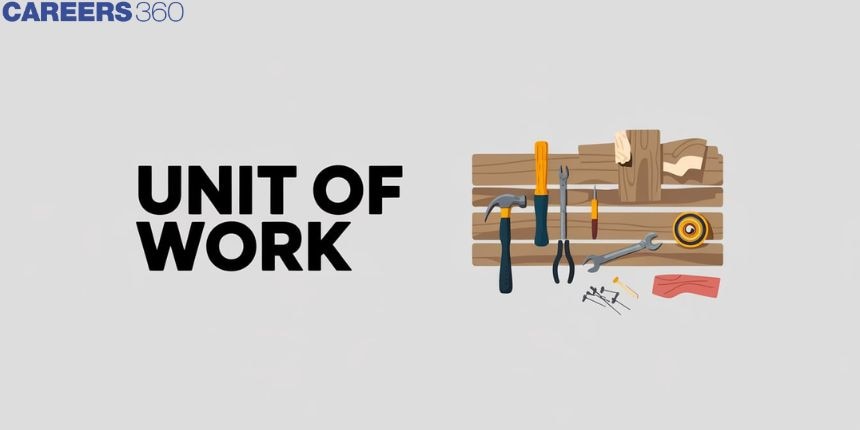Unit of Work - Definition, Formula, FAQs
Work is defined as the extent to which an object or a point is moved. Some frequent examples of force are to cycle on a mountain bike or carry something with the gravity of the earth.
Mathematically, work is represented as follows;
W = Fd cos(θ)
Where ,
F is force applied
And d is the displacement
This Story also Contains
- How to measure work done? Or definition of work measure
- Unit of work-
- What is the SI unit of Work?

Also read -
How to measure work done? Or definition of work measure
We regard work as a synonym for effort, labour, exertion or energy invested in our everyday lives. The term work, however, is completely distinct in Physics from all of these terms.
The work carried out is measured as in Joules(J). The work is calculated by multiplying the force by object's displacement.
W = F. S.
Unit of work-
In SI: Kg m2 s−2 The basis unit
The MKS unit here is Kg m2 s−2.
The meter-kilogram-second is called MKS
Also Read:
What is the SI unit of Work?
The SI work unit is Joule (J). Joule is defined as the work of a newton, which causes a one meter displacement. The newton meter (N-m) can sometimes be used as a measurement method.
Dimensional Formula Of Work
ML2T−2 provides the dimensional formula.
Also check-
- NCERT Exemplar Class 11th Physics Solutions
- NCERT Exemplar Class 12th Physics Solutions
- NCERT Exemplar Solutions for All Subjects
NCERT Physics Notes:
Frequently Asked Questions (FAQs)
Work unit and its definition. Work unit is Joule. 1 joule is the work done if 1 Newton moves the body in the direction of force by a distance of 1 meter.
The concept of work carried out in W equates, mathematically, to force f times the distance (d), which is W = f. d, and, if it is applied in angle θ − due to the shift, then work done in W = f.dcos θ
The work being done is minimum as COS 180 is equal to negative one when the force is applied to one direction, while the body's displacement is to the opposite end. This is the least work possible and maximum work is done when the force and displacement is in the same direction.
Work is done by moving the object by a force applied to the object. The work is determined by multiplying the force by the movement quantity of the item (W=F*d). There is 30 n-m of work by a force of 10 newtons moving an object for 3 m.
Work is a quantity scalar which is made up of two quantities of vectors.